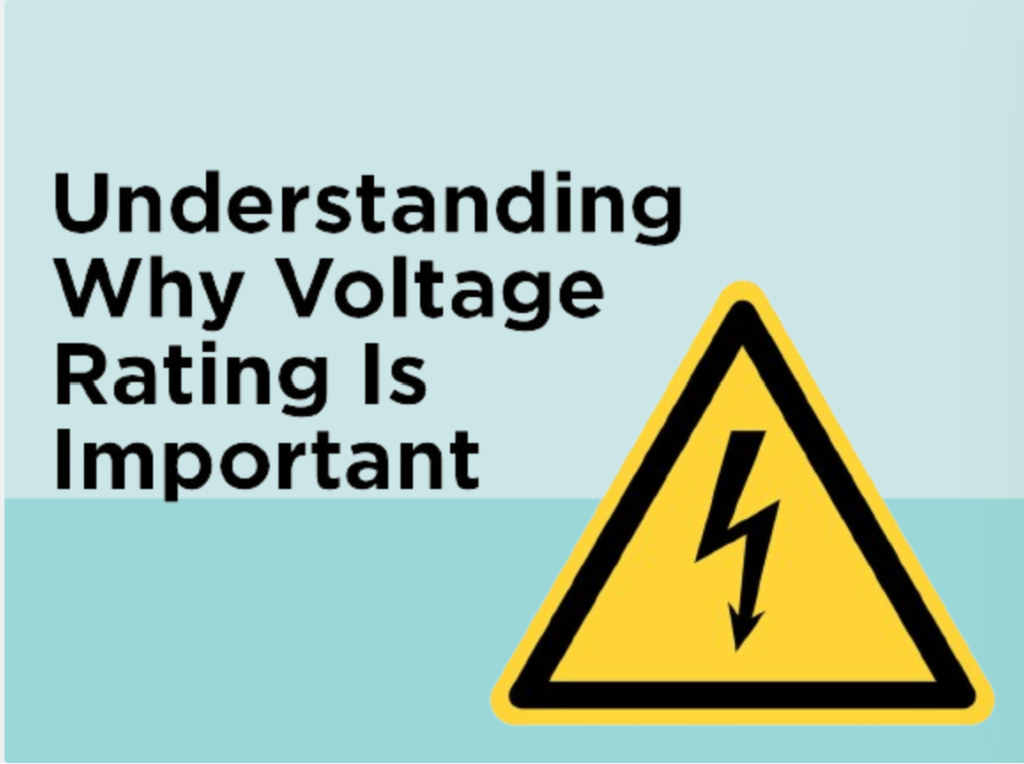Voltage rating refers to the maximum voltage that an electrical component or device is designed to withstand safely during operation. It indicates the highest voltage level at which the component can operate reliably without experiencing damage or failure.
For example, electrical cables, transformers, circuit breakers, switches, and other equipment are typically assigned specific voltage ratings. This rating is important because exceeding the voltage limit can lead to insulation breakdown, arcing, and other hazardous conditions.
Voltage ratings are usually expressed in volts (V) and may include both AC (alternating current) and DC (direct current) voltage levels. It’s essential to ensure that the voltage rating of a component matches or exceeds the voltage of the electrical system it will be used in to prevent safety hazards and equipment malfunction.

What is Voltage Rating?
There are three voltage rating terms that will be discussed here:
- Breakdown Voltage
- Dielectric Withstanding Voltage
- Working Voltage
Breakdown Voltage:
The breakdown voltage test involves gradually increasing the applied voltage to the Device under Test (DUT) until a failure occurs, such as an arc, corona, or high leakage current. This test helps determine the minimum voltage level that causes failure in a controlled laboratory setting. Typically, three-quarters (3/4) of the breakdown voltage is established as the Dielectric Withstanding Voltage (DWV) test voltage, providing a suitable safety margin.
Dielectric Withstanding Voltage (DWV):
DWV defines the maximum voltage limit that a device under evaluation, such as a connector, socket, cable, or cable assembly, can withstand. It refers to the voltage that the dielectric material, in conjunction with the conductive material, can withstand while still functioning within the intended application. DWV testing ensures that the device can operate without experiencing arcing, corona, or leakage current that could harm the device or its application. DWV is a test voltage and should not be confused with the working voltage.
Working Voltage:
The working voltage of a connector refers to the voltage that the connector can continuously withstand without failure. It is typically rated at one-third (1/3) of the DWV test voltage. This derating ensures that the connector remains operational at the working voltage and can withstand transient voltages or surges that may occur at amplitudes of up to three times the working voltage. This approach accounts for crest factors, which are common in various types of testing, ensuring the connector’s reliability under real-world operating conditions.
Voltage Surges and Pulses
Voltage surges and pulses, including those from lightning strikes or inductive/capacitive spikes, present unique challenges for voltage withstand capability. These events must not exceed the normal Dielectric Withstanding Voltage (DWV) test voltage to ensure the device’s integrity.
Very rapid surges and pulses can induce arcing at lower voltages compared to the standard 60 Hz frequency of a wall outlet. Managing fast-changing voltage signals often requires customized testing, which can be costly, typically ranging from $5K to $10K.
What is the normal voltage rating?
How do you calculate voltage rating?
For examples:
For 2400 Watts and 20 Amps, using the formula: Volts = 2400 Watts / 20 Amps = 120 Volts.
For 2400 Watts and 10 Amps, using the same formula: Volts = 2400 Watts / 10 Amps = 240 Volts.
These calculations assume a constant power (Watts) and varying current (Amps), resulting in different voltage (Volts) values depending on the current flowing through the circuit. It’s important to note that these calculations are theoretical and may not always reflect real-world scenarios due to factors such as resistance, impedance, and power losses in the circuit.